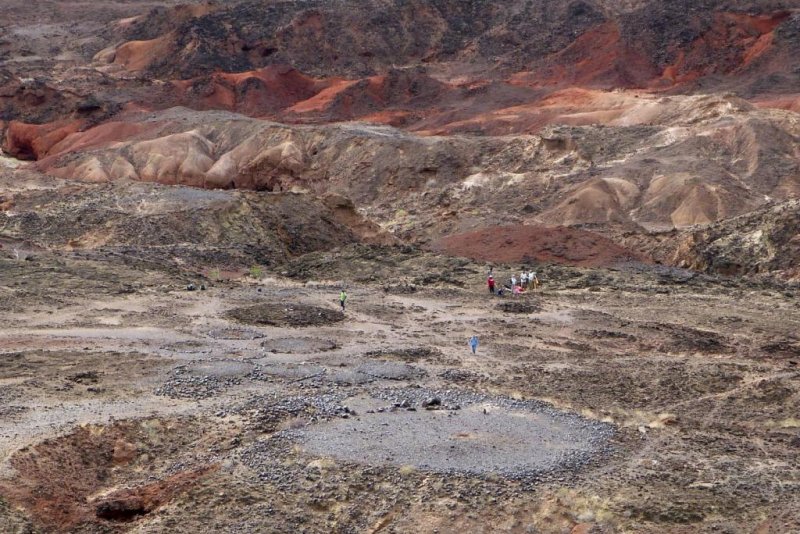Early East African herders buried their dead in densely packed communal graves topped with stones and large pillars. Photo by Katherine Grillo
Aug. 21 (UPI) -- Archaeologists have excavated one of East Africa's largest, earliest monumental cemeteries in Kenya.
Constructed some 5,000 years ago by early pastoralists, the massive cemetery undermines traditional ideas about early human societies and monument building.
The Lothagam North Pillar Site was communal cemetery shared by East African herders for several centuries. Graves were capped with stones and topped with megalith pillars, some sourced from more than a half-mile away.
Until now, archaeologists believed only complex societies with stratified social structures were capable of constructing large, public monuments. But burials at the Lothagam North Pillar Site suggest the East African herders were without differentiated social classes. Men, women, children and elderly were laid to rest side by side inside the cemetery's burial cavities.
"This discovery challenges earlier ideas about monumentality," said Elizabeth Sawchuk, an archaeologist at Stony Brook University and the Max Planck Institute for the Science of Human History, said in a news release. "Absent other evidence, Lothagam North provides an example of monumentality that is not demonstrably linked to the emergence of hierarchy, forcing us to consider other narratives of social change."
The Lothagam North Pillar Site suggests egalitarian societies were capable of constructing large public monuments. Scientists described Lothagam's excavation this week in the journal PNAS.
At the time of the cemetery's construction, East Africa was experiencing significant social change. Just herders moved into the Turkana Basin from a variety of origins, a decrease in rain stressed agricultural systems. A communal space may have helped reinforce social ties among disparate groups and helped diverse communities endure economic and environmental change.
"The monuments may have served as a place for people to congregate, renew social ties, and reinforce community identity," said Anneke Janzen, researcher at the Max Planck Institute for the Science of Human History. "Information exchange and interaction through shared ritual may have helped mobile herders navigate a rapidly changing physical landscape."















